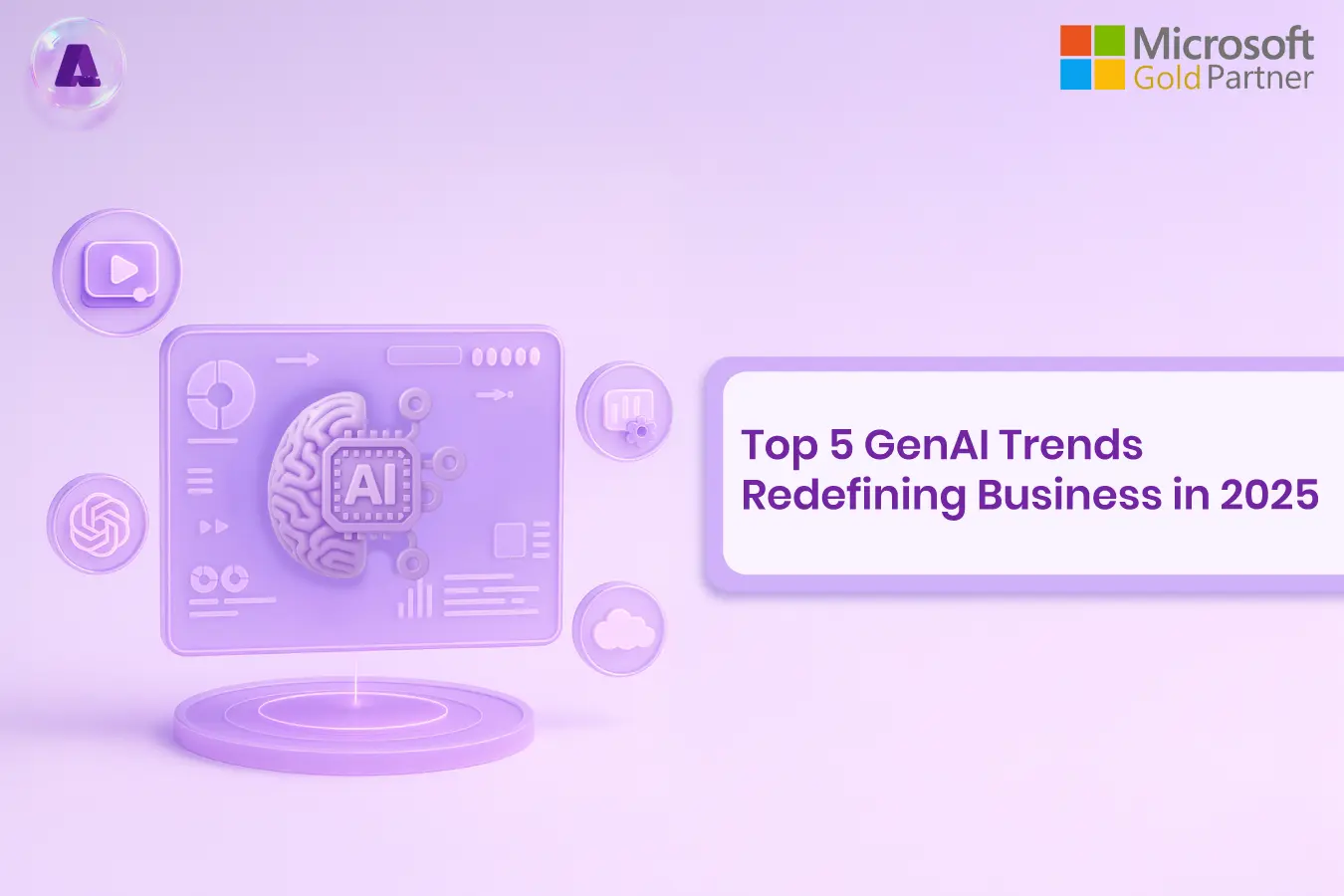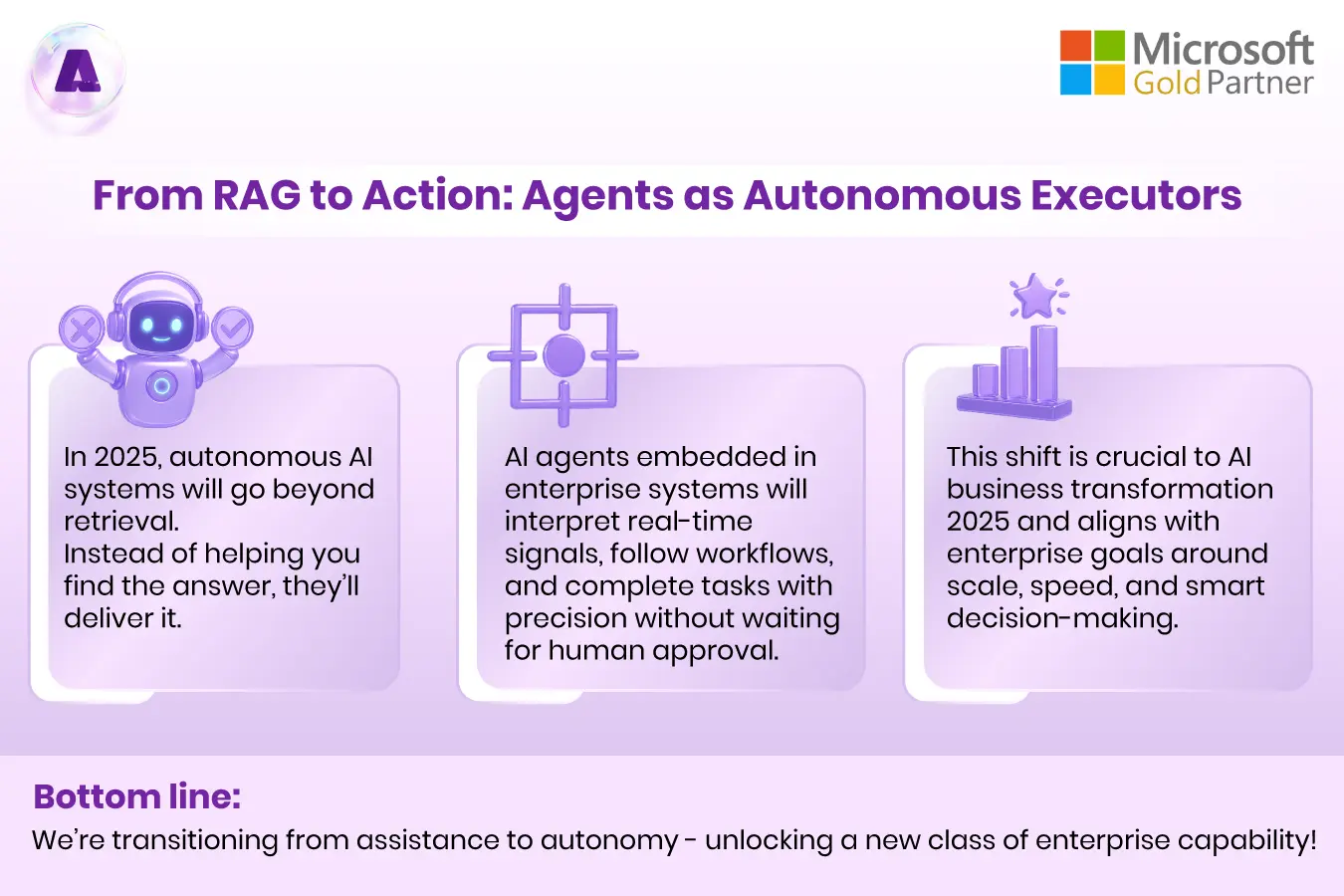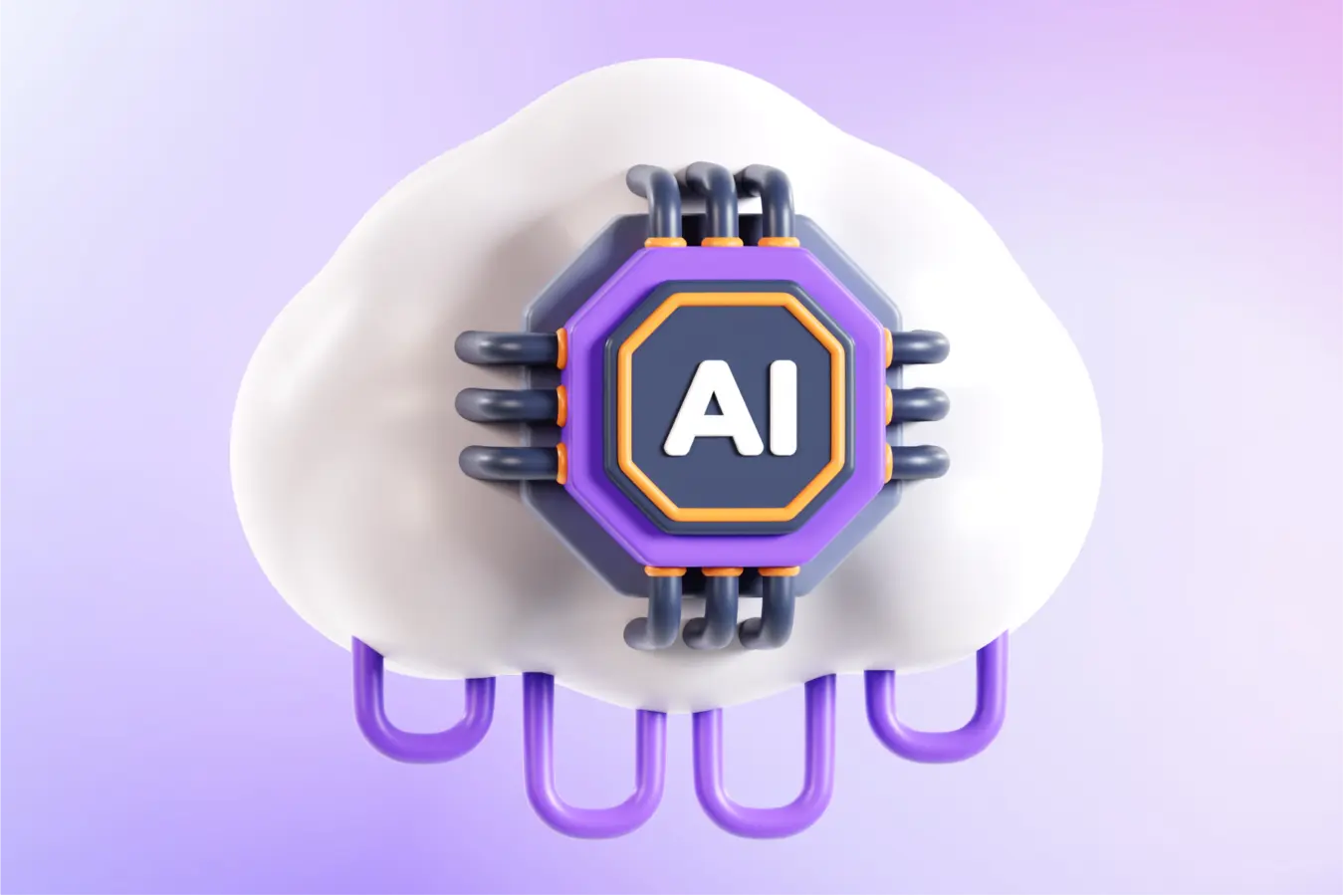
As companies push deeper into digital transformation, generative AI isn’t just riding shotgun—it’s taking the wheel. What started as a novelty in enterprise tools has evolved into a foundational layer for how businesses operate, innovate, and connect with users. For leaders navigating this rapidly evolving space, staying on top of Generative AI trends 2025 could define who leads and who lags.
Here are five key artificial intelligence trends 2025 that will reshape how we build and scale businesses:
From AI-Infused to AI-First: Applications Built Around Intelligence
Until recently, most enterprise apps added generative AI like a cherry on top—chatbots here, writing assistants there. In 2025, we’ll see a seismic shift: AI won’t be a feature; it’ll be the foundation.
We’re entering the era of AI-first applications, where intelligent automation is embedded into software design from day one. These apps will rely on large language models (LLMs) to drive decisions, user interactions, and end-to-end functionality.
For instance, platforms like Cursor and Windsurf illustrate what’s possible when AI is central to the development process—not an afterthought. This change marks a major milestone in enterprise AI adoption, signaling a future where AI isn’t just added to tools—it is the tool.
Bottom line: In 2025, AI-first apps will set the standard—not the exception.
Generative AI Trends 2025: Agents That Act, Not Just Analyze
We’re witnessing a core shift in how generative AI in business is being used. Rather than just analyzing data, intelligent AI agents are stepping up to take action.
This “Service as Software” model transforms traditional tools into proactive systems. Imagine a CRM that not only gathers insights but also crafts personalized follow-ups, sends them, and updates the pipeline—no human in the loop.
Salesforce’s Agentforce is one such glimpse into the future of AI-powered business strategies, where success is measured by outcomes, not features.
Bottom line: AI agents will become hands-on teammates—reshaping how services are delivered and monetized.
Real-Time Speech Will Redefine How We Interact With Tech
Thanks to real-time speech recognition, 2025 will bring AI that listens, understands, and responds naturally.
This makes AI-driven business innovation more accessible across roles—no need for perfectly typed prompts or technical know-how. Just speak, iterate, and collaborate with AI like you would with a team member.
This advancement will unlock new opportunities across customer service, sales, and operations, expanding AI adoption in 2025.
Bottom line: Voice-native AI makes enterprise tools intuitive and inclusive.
Dynamic Interfaces: Generative Design for Every User
Forget static layouts. Generative AI is enabling dynamic user interfaces that build themselves based on your role, task, and context.
Whether you’re managing a team or submitting reports, your tools will anticipate what you need—and adjust in real time.
Companies like Vercel and Bolt.new are already experimenting with these adaptive experiences, shaping the future of AI in enterprises.
Bottom line: Generative UIs will reduce complexity while increasing personalization and productivity.
From RAG to Action: Agents as Autonomous Executors

In 2025, autonomous AI systems will go beyond retrieval. Instead of helping you find the answer, they’ll deliver it.
AI agents embedded in enterprise systems will interpret real-time signals, follow workflows, and complete tasks with precision—without waiting for human approval.
AptlyStar makes this possible by letting teams build AI agents in minutes, powered by a Retrieval-Augmented Generation (RAG) framework. These agents don’t just surface information—they take action across high-impact domains like:
- Customer Support – auto-resolving tickets, routing escalations, and updating CRM systems.
- Sales – qualifying leads, sending follow-ups, and scheduling meetings autonomously.
- Education – serving as 24/7 AI tutors that personalize learning paths, assess progress, and provide instant feedback.
This shift is crucial to AI business transformation in 2025 and aligns with enterprise goals around scale, speed, and smart decision-making.
Final Thoughts: Preparing for the Future of AI in Enterprises
The Generative AI trends 2025 outlined above are not just tech predictions—they’re strategic imperatives. The most competitive businesses in 2025 will be those that move beyond experimentation and embed AI deeply across operations, governance, and culture.
With the impact of agentic AI on business operations accelerating, it’s time to rethink everything from service delivery to workforce planning.
Table of content
- From AI-Infused to AI-First: Applications Built Around Intelligence
- Generative AI Trends 2025: Agents That Act, Not Just Analyze
- Real-Time Speech Will Redefine How We Interact With Tech
- Dynamic Interfaces: Generative Design for Every User
- From RAG to Action: Agents as Autonomous Executors
- Final Thoughts: Preparing for the Future of AI in Enterprises





